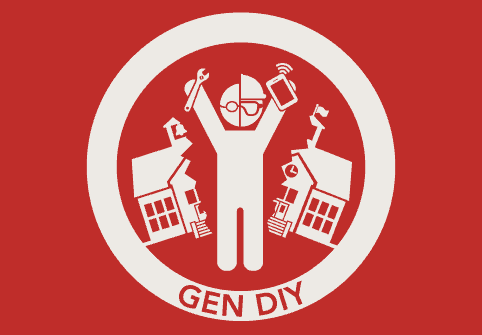5 Options Allow GenDIY to Rethink College

This blog first appeared on The Huffington Post.
Finish high school, go to college, graduate four or five years later and go to work–only it doesn’t work that way very often for Millennials. High rates of young adult unemployment, expensive degrees, and challenging life circumstances are causing many young people to rethink college.
The Bachelors Degree, the great American wage escalator, historically added about $1 million to lifetime earnings. But the escalator doesn’t work as routinely as it used to. Young adult unemployment remains stubbornly high, and a degree doesn’t always help. Earlier this year the Federal Reserve Bank of New York reported that 44% of graduates were underemployed reflecting a mismatch of skills and a lack of work experience.
The Generation DIY (#GenDIY) hack on higher education is a series of solutions that boosts affordability, flexibility, and employability–cost effective learning, relevant skills and experiences, tailored supports, accelerated progress, all for a better return on investment on higher education. There are five emerging GenDIY approaches.
1. College in high school. In most states students can begin earning free college credit in high school. Concurrent enrollment can take place on a community college campus, online, or with a college certified instructor in high school. About 300 early college high schools are organized so that students can graduate with one or two years of college credit. High scores on Advanced Placement and International Baccalaureate exams are accepted by some higher education institutions.
2. Cheap credits. There are a growing number of options for accumulating inexpensive college credits. Community colleges are often inexpensive–free in Tennessee.
University Now, StraighterLine, and Pearson’s Propero power low cost self-directed online credits. Western Governors University and College for America offer competency-based degree programs that recognize prior knowledge.
College Board administers competency-based College Level Examination Program (CLEP) for 33 courses. Many institutions will accept high scores. Registration and administration costs about $100. There are several free CLEP prep resources including Saylor.org.
3. Learning online. Along with a slew of online universities almost every traditional institution offers some online offerings. Without much current data it’s hard to tell but it’s likely that more than half of college enrolled students are taking at least one class online. Most online degrees could be better (here’s 10 ways) but they extend access and flexibility.
4. Skill schools. A big breakthrough in learning for Millennials is the rapid growth of informal online learning markets like Udemy and Skillsoft–great options for a wide range of skills. General Assembly specializes in tech, design, and management for startups.
Code schools like Bloc and CodeAcademy offer rapid pathways to jobs in web development and coding. Udacity offers nano-degrees in web design and mobile app development. (See 12/22/14 update on great results from The Flatiron School).
5. Free learning. Massively Open Online Courses (MOOC) exploded on to the scene in 2012, extending free access to courses from top professors at brand name universities. Coursera offers 882 courses from 116 universities and serves 10.6 million learners. Coursera recognizes course completion with an optional Verified Certificate.
Want to learn Python or web design? P2PU offers free courses and a learning community. Expanding open education resources (OER) include Saylor.org, CK12, NROC, and Khan Academy. (See 70 Sources Of Free eLearning Courses.)
Alternative market signaling strategies including badging, certification, portfolio, and references are augmenting or replacing degrees in dynamic job categories
Innovation. Competition is coming from new directions with more online course options, credit opportunities, and the unbundling of postsecondary services. Innovation will continue along (at least) five dimensions:
- Delivery: blended (mix of online and onsite delivery), online, and self-paced.
- Pedagogy: interactive, project based, applied, and on the job learning.
- Organization: discipline based, integrated (ASU is a partial example), or modular.
- Matriculation: course-based, competency-based, and tests for prior knowledge.
- Business Model: pay for attendance, pay for premium services (tutoring, content), or pay for certification (some MOOC options).
Wired students armed with mobile devices used to anywhere anytime options will continue to drive postsecondary innovation.
For more, see:
- Southern New Hampshire Reshaping HigherEd Landscape
- An Avalanche of Change is Coming in HigherEd
- Experts Weigh in on K-12 Coding & CS Resources
Coursera, General Assembly, Udemy are portfolio companies of Learn Capital where Tom is a partner.








0 Comments
Leave a Comment
Your email address will not be published. All fields are required.